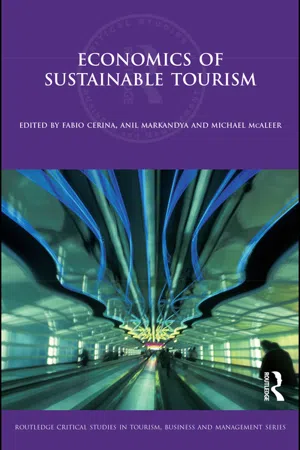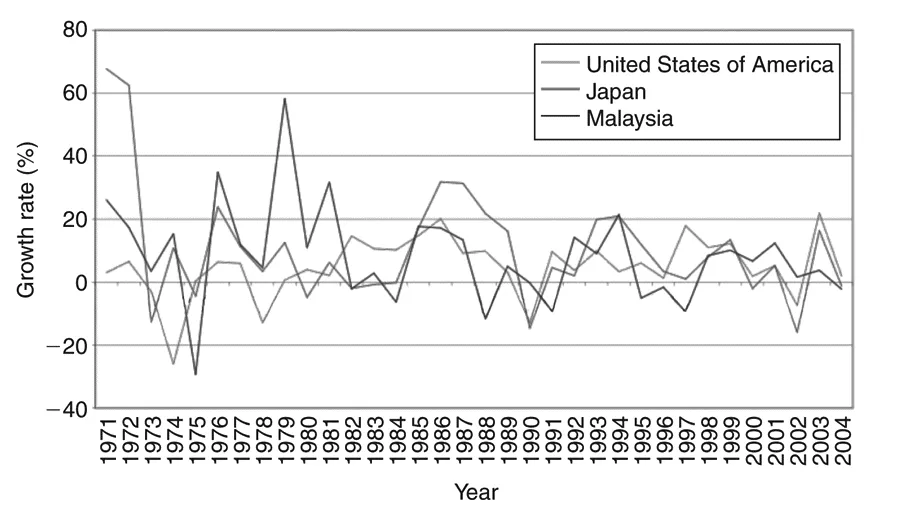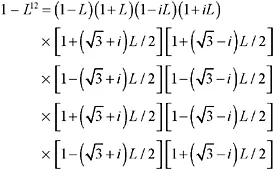1.1 Introduction
Thailand is one of the most important tourism destinations in Asia. The numbers of tourist arrivals from different countries of origin has been increasing continuously over the past few decades. The United States, Japan and Malaysia are Thailand’s major tourist source markets, respectively representing long- haul, medium- haul and short- haul tourism markets for Thailand, with market shares of 7.21 per cent, 10.35 per cent and 11.88 per cent of total international tourist arrivals to Thailand in 2005, respectively (Tourism Authority of Thailand, 2005). The average annual growth rates during the period 1971–2005 were 4.74 per cent, 10.42 per cent and 8.03 per cent, respectively, for the United States, Japan and Malaysia.
The United States is the most important long- haul inbound tourism market for Thailand and is considered to be one of the highest- potential growth markets for tourism in Thailand. This market has shown strong growth since 1996, driven by strong economic growth. However, the market slowed, and faced a serious decrease in 2003 because of the Iraq conflict as well as the SARS outbreak, but resumed its normal growth pattern in 2004. In 2005, there were 639,658 American visitors, or 7.21 per cent of international visitor arrivals. Most Americans visited Thailand in non- group tours and consider Thailand a holiday destination. The average length of stay of American visitors to Thailand was 11.46 days, and the average amount spent was 3,804.64 baht per person per day, which earned Thai tourism income of 25,257.39 million baht (Tourism Authority of Thailand, 2005).
Japan is the most crucial medium- haul inbound market to Thailand. This market had a strong growth rate during 1994–1996 because of the strong economy and the strength of the Japanese yen. The market continuously slowed after 2001 because of 9/11, the SARS outbreak and Japan’s economic crisis of 2003, but returned to its normal growth trend in 2004. In 2005, there were 1,196,654 Japanese visitors to Thailand, making up 10.35 per cent of total international visitor arrivals. Most Japanese tourists travelled to Thailand in non- group tours, and consider Thailand a holiday destination. The average length of stay of Japanese visitors to Thailand was 8.09 days, and the average amount spent was 4,205.25 baht per person per day, which earned Thai tourism an income of 40,209.18 million baht, the highest for all source countries (Tourism Authority of Thailand, 2005).
Malaysia is the most crucial short- haul inbound market for Thailand. The Malaysian tourist market is a high- sharing market, and the growth rate is always encouraging as the Malaysian border is connected to southern Thailand, and transportation can be by air, land or sea. During 1996–1997, the market slowed, and then faced a serious decrease in 1998 because of the Malaysian economic crisis. In 1999, the Malaysian economy recovered, and the Malaysian tourist market subsequently prospered. In 2003, SARS caused a decrease in the number of Malaysian tourists, but the problem was soon resolved. In 2005, there were 1,373,946 Malaysian visitors to Thailand, making up 11.88 per cent of total international visitor arrivals. Most Malaysian tourists were on non- group tours, and considered Thailand a holiday destination. The average length of stay of Malaysian visitors in Thailand was 3.68 days and the average amount they spent was 3,666.72 baht per person per day, which generated an income of 18,102.07 million baht for Thai tourism (Tourism Authority of Thailand, 2005).
The purpose of this chapter is to investigate the relationship between the demand for international tourism to Thailand and economic determinants, specifically the consumer price index. Autoregressive moving average with exogenous variables (ARMAX) models are used to analyse the relationships between tourist arrivals from the different countries to Thailand and the consumer price index, and to examine the effects of economic variables on the numbers of tourists to Thailand. We examine monthly tourist arrivals from three major countries of origin, namely the United States, Japan and Malaysia, which represent Thailand’s largest long- haul, medium- haul and short- haul tourism markets, respectively.
The structure of the remainder of the chapter is as follows. Section 1.2 gives the methodologies used in the chapter. Section 1.3 provides the empirical results
from seasonal unit root tests and ARIMA/ARIMAX models. Some concluding remarks are presented in Section 1.4.








































